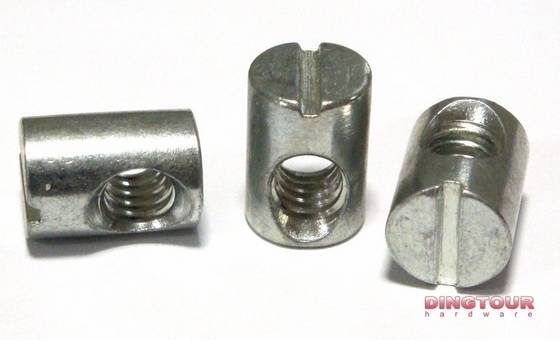Those are some thoughts i well... didn't hope for (since they are basically saying i can't do this) but still wanted to see since i didn't had (all) of them.
Did some thinking and calculating on the weekend, just didn't have internet to post much about that, so there are slight updates:
currently i think about using titanium, 3cm thick, and everything 3cm wide. Also making it (almost) symmetrical with 24cm diameter, and thinking about adding two bolts per side into it as teeth. Still thinking about some counterweight for those bolts, since not having them right away would make the lathe work easier and less dangerous. but already having the counterweight without them could pose another problem there. This gives me about 5kg for the beater (pulley not included) and hopefully enough strength (will it?^^) at 0,02625 kg*m² MOI.
Okay, gonna try to post more structured.
1. yes, the idea was to make a pulley from two half-circles, with holes to fit a square shaft, bolted together over it. Thought this way i won't need a hub for it, and the bolts could get right through where the belt will go (after all, those are just kinda small holes, hopefully not making the belt wiggle) and possibly bolting it sideways into one of the big parts of the beater, if needed. Wanted to get that part watercut along with the beater. But honestly, i have no idea on how much force there is on that part, so i don't know if that would be sturdy enough.
2. Now i actually don't think getting the belt over the beater would be a big problem, as you can get it over the top part down to the shaft, and only then over the bottom part, making the longest needed the diagonal distance from inner shaft/beater to outer edge of the beater. That's 145mm. Adding some more, since the belt got some thickness, but still it's way less than 400mmSo i think you might have just wanted to put it over from one side, and hopefully those described problems won't happen. (Still the part about using the right belts is really interesting. i see every kind of belt used on bots, but seldom someone says which one was better... they all seem to work just good enough or simply get off too often, nothing about not transmitting enough force.
3. Originally wanted to leave the middle part square, avoiding those problems with getting it round.
If i could get it round for a third bushing... i have to ask a friend of mine, he got the lathe and knows how to use it, really can't answer that by now. But polishing won't be a problem, beside the material (it will take a long time) it shouldn't be harder than some stuff i already did.
4. Yeah, getting the mount precisely made will be a big problem. I am used to having to work really precise, but... i am a dental technician, i usually work with stuff the size of teeth. If i could work that precise on this scale... at least i don't have the equipment to do it the way most people would do it. Have to put some more thinking into it if i can find a way, or if not... well, 30mm titanium square are still likely to bend? damned. Even have access to a CNC mill, but that one only can mill small stuff, too -.-
But good thing to know this kind of bushing is used and where it is used, somehow thought if i cut a bearing it won't make one exact circle again afterwards, possibly causing some problems.
5. Regarding the motor, i got one where the description says "1410W". thats maximum output and it didn't have a description for continuous output (or torque, as it is almost always with brushless ones), and 660kv, running on 5s.
So i calculated a bit with what i have, assuming a 3:1 reduction (somehow found that often reappearing in the build diaries)
The run amok calculator gives me a bit over 2300J of energy stored at full speed.
So if Watt is J/s, and even if there is a lot of energy lost on the way, i hoped that would be enough to get to reasonable speed within two seconds.
Also assumed only 1cm for the pulley width, if that is too thin i have to redo that a bit.
Also was going to put the pulley directly onto the bell of it, again not needing a hub (there are threaded holes to do this, after all).
The usual front would be the side mounted, calculated with letting the 2cm shaft just stick through my mounting plate, so i could have 2cm for mounting without extra size.
With the motor itself being about 5,5cm, i could have all that stuff in 7,5cm and leave a 2,5mm clearance on both sides. Not much, but within the 2-5mm you spoke of and making the numbers nice.
I know there is a lot of guessing in it from my side... but well, that's why i am asking here
If i see it right now, my biggest problems (aside from "is there enough weight for the rest of the bot?") will be the supporting of the middle, if that would be possible.
Well.. got half a day without much work for my brain to think about it now.
Anyway... really thanks a lot for all this thinking and those insights. Always better to get told "you can't do that and this is why" instead of just wasting money and time for something that couldn't work.
- FRA
- Forum
- Robots
- Events
- Media
- What's New?
All times are GMT. The time now is 17:18.




 Reply With Quote
Reply With Quote


Bookmarks